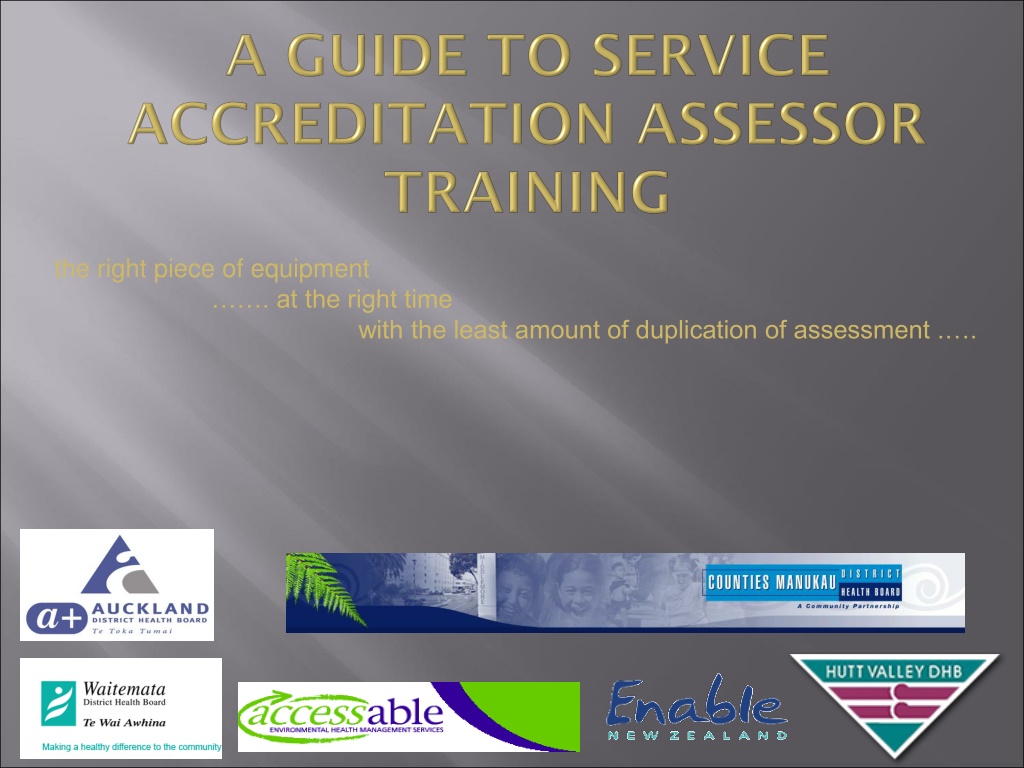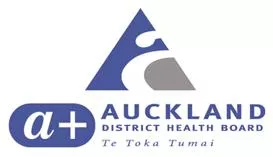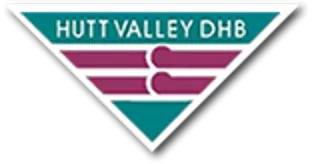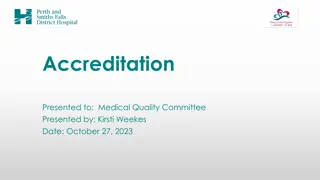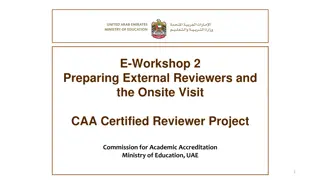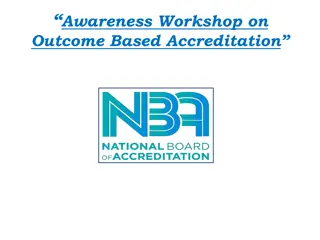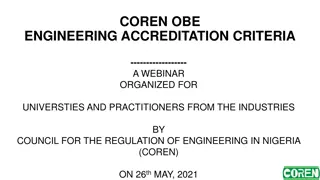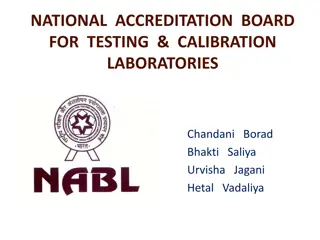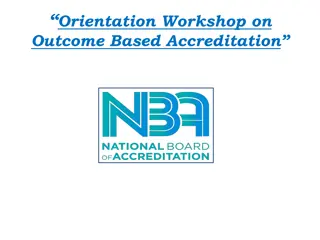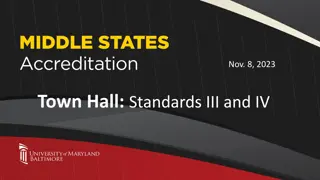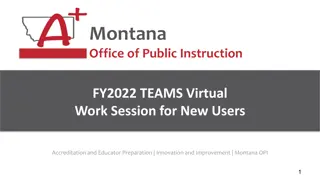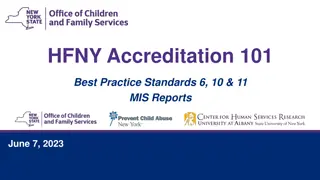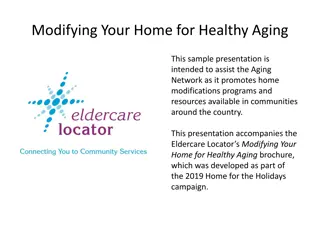Efficient Implementation of Service Accreditation for Equipment and Modifications Programme
Establish a working party involving key stakeholders, organize training sessions for trainees and therapy assistants, focus on understanding the impact of Service Accreditation, and ensure thorough documentation and practical demonstrations of equipment. The aim is to streamline processes, minimize duplication of assessments, and enhance the positive impact on client care.
Download Presentation

Please find below an Image/Link to download the presentation.
The content on the website is provided AS IS for your information and personal use only. It may not be sold, licensed, or shared on other websites without obtaining consent from the author. Download presentation by click this link. If you encounter any issues during the download, it is possible that the publisher has removed the file from their server.
E N D
Presentation Transcript
the right piece of equipment . at the right time with the least amount of duplication of assessment . .
Working Party Consider how service accreditation will operate Set up Sustainability and ownership Establish the best fit with in your DHB for service accreditation to be implemented Link implementation with existing policy and procedure e.g. performance review and supervision Identify and arrange who will take a lead in the process and manage on-going monitoring Physiotherapist and Occupational Therapist to be included in your working party due to their knowledge and understanding of Ministry of Health Equipment and Modification Services (EMS) A Senior District Nurse and Staff Educator also to be involved The working party are familiar with the pilot project document
Format All trainees complete all sessions Therapy Assistants complete an extra session - You may decide to vary the session format to suit your local needs Session 1 1.5 hours introduces Service Accreditation trainees come away with an understanding of how Service Accreditation can positively impact on the clients they work with between session one and session two trainees are asked to refer to their clinical reasoning checklist and DHB Service Accreditation Equipment List in the context of their normal client assessments trainees return to session 2 with a context to their role in Service Accreditation and any questions that may have arisen Session 2 1.0 hour focuses on the administrative role and responsibilities. Preferred methods of delivery, installation and follow up. practical viewing and demonstration of equipment and questions. Session 3 for Therapy Assistants Only
Session 1 Presentation MoH Service Accreditation List Clinical Reasoning Checklist Case studies and group work Session 2 Presentation Documentation and records Reflections over past week, discussion and questions Equipment Practical Monitoring All trainees discuss first two applications with designated person
the right piece of equipment . at the right time with the least amount of duplication of assessment .
Understand the background to the MOH Equipment and Modifications Improvement Programme and Service Accreditation Gain an understanding of equipment support services and the roles and responsibilities of Service Accreditation To leave today with a practical understanding of how Service Accreditation can impact positively on the clients you work with
Session 1 clinical component : 90 mins Session 2- administrative component: 60 mins Face to face support from your designated Occupational Therapy or Physiotherapy Supervisor discuss a minimum of 2 applications with your supervisor.
Reason for training Eligibility criteria for permanent equipment Clinical reasoning for the provision of equipment Questions
Why have Service Accreditation? Minimise risk to client and yourself Minimise time delay Reduce the number of health care workers coming in to a person s life / home Make the best use of staff resources It fits within several disciplines assessments
Occupational Therapists (OT) are accredited under the Accreditation Framework to recommend personal care and household management equipment for disabled people with long term equipment needs Physiotherapists (PT) are accredited under the Accreditation Framework to recommend walking aids for disabled people with long term equipment needs Clients who need long term personal health, household management or mobility equipment are referred to an OT or PT
Clients receive equipment with minimal delay and unnecessary multiple assessments A range of health care providers such as .. Home Services Assessors Nurse Specialists Occupational Therapist Therapy Assistants Gerontology Social Workers Physiotherapists will all be able to meet the clients permanent equipment needs at the time the need is identified Increased work force knowledge on the EMS requirements for applications to recommend long term equipment
MOH funded equipment to help people with daily living includes items such as: Shower stool Walking frame Bedside commode A national Service Accreditation List of personal care, household management and mobility equipment is available to assessors.
Accessable 18A Frost Rd Mt Roskill Auckland Accessable covers geographic areas from Meremere northwards. Enable New Zealand 69 Malden Street PO Box 4547 Palmerston North 4442 Enable New Zealand covers the entire South Island and the lower and central part of the North Island up to the Bombay Hills.
Clients must have an assessment with an EMS Assessor to: Determine the need for equipment Discuss funding options which could include self- funding
Determine the need for equipment Select the most cost effective and suitable item Explain process to client Client signs relevant forms Complete MoH List Equipment form Email or fax to Accessable or Enable New Zealand Follow Up - ensure equipment is meeting the client s need
Questions Consider .. The person s perspective: what does he/she say is their need or the problem? Ask them, what can t they do that they need to do? Add your assessment findings: what have you noticed about the person? Ask yourself: What can they do/can t they do? e.g. unable to transfer on/off toilet, chairs; unable to get to the toilet on time Person Why can t they do it? Guide to Clinical Reasoning and Recommending Equipment 1. What is the issue for the person? 2. What are the specific functional limitations? Are there physical limitations? Pain, muscle weakness, impaired balance, incoordination, reduced range of movement What is his/her mobility like? Endurance/fatigue Respiratory function: short of breath? Is he/she able to plan and initiate actions What is his/her cognitive understanding and abilities like? (E.g. anxiety, memory, confidence, follow instructions ..) Social Environment 3. Are there additional factors that influence this issue? Living arrangements Social support Prefer personal help over using equipment Other help (paid or unpaid, e.g. family or friends) available or not Who else uses this space/room? Space available Size Steps Layout Which way the door/s open Barriers Floor surface, levels What can t they do that they need to do? What are the short, medium or long term impacts of not being able to do these things? 4. How does this impact on the person s ability to do the task, or their daily routine? What would need to happen to influence or change these factors and is this realistic / likely to occur? 5. Which of these factors can be influenced or changed? What would make a positive difference? e.g: Nothing Training in a new technique or method of doing the activity Refer to occupational therapist, physiotherapist for specialist input Carer or carer training required Modify the environment: will equipment be enough? Short-term or long-term need? Trial solution What is available? Will the equipment suit the client and the environment? Will or can the person, family, caregivers use the equipment? Does the person meet Ministry of Health (MoH) criteria? Can I order this equipment from the MoH s list? Yes? Go ahead and order the equipment. No? Discuss with or refer to occupational therapist. Is the person safe? Do they use the equipment? Do they use the equipment safely? If it doesn t solve the issue who can you refer to? 6. What are the options? 7. If equipment is the option, what will address the needs? 8. Does this solution solve the actual issue?
The client must have a disability as defined by the Ministry of Health: people who have been assessed as having a physical, intellectual or sensory disability (or a combination of these) Will enable the person to return to, remain in or mobilise in the home.
The person will have a disability that lasts for more than six months will have difficulty doing some everyday tasks on their own and need ongoing support lives in New Zealand, and is a New Zealand resident or is eligible under a shared funding agreement with another country is not eligible for cover and entitlement through ACC
Be trained by their DHB Identify functional limitations and essential need for equipment with the person Establish the person is eligible for EMS funding Identify the most cost effective equipment to meet the person s essential needs and document the rationale in their file
Your DHB may put together a short list of equipment taken from the MoH Service Accreditation List (may be specific to each DHB) This may be the most frequently recommended equipment from the MOH Service Accreditation List that is relevant to your service Is covered in your training via case study and practical experience Quick reference card for easy use
You may choose to have pieces of equipment on display or simply use your DHB Service Accreditation List to promote group discussion An equipment practical is held in the next session and reviews: the advantages and disadvantages of the items set up and features general advice and education.
The following 4 cases are designed as a resource that can be used to raise awareness of service accreditation and demonstrate how services might be delivered when working to the principles of service accreditation It should be noted these cases are not prescriptive but are community examples to support learning and development of clinicians as they familiarise themselves with the training module
A 65 year old man presents with slow mobility due Parkinsons Disease. He lives with his son. He needs to use the toilet often. He struggles to get on/off the low toilet. He is also has difficulty standing in a large shower box What pieces of equipment may be useful for this person? - shower stool? - raised toilet seat or an over toilet frame? - a 3 n 1 commode for the toilet and the bedroom? - rails beside the toilet may be an option? Is it appropriate for you to apply for the equipment? - shower stool ( yes) - toilet equipment ( yes) - advise family to install a rail beside toilet
A 52 year old lady with Rheumatoid Arthritis. She is unable to stand long enough at the kitchen bench to prepare her meals but wishes to be as independent as possible. She mobilises with a walking frame without a seat. Compare the use of a perching stool and a walking frame with a seat in this situation. Describe the pros and cons of the two items of equipment Perching stool Pro - adjustable in height to work at the kitchen bench has a backrest and armrests to support posture and transfers angled seat to allow for perch position to work at the kitchen bench Con - another piece of equipment to fit into the kitchen space may need to physically move the stool to and from the kitchen bench for access to kitchen cupboards etc Walking Frame Pro- only requires one piece of equipment for mobility and meal preparation if kitchen is compact has brakes to ensure safe transfers on/off seat wider seat size for a larger person Con- seat is not adjustable in height so may be too low for transfers on/off
A tall 70 year old man referred to District Nurse for a wound sustained in a fall. He presents with bilateral OA hips and mild confusion and memory loss. He lives with his wife who is petite. He mobilises with a shuffling, painful gait and has difficulty with bed, toilet and chair transfers. His wife has to assist him with the shower over the bath. What pieces of equipment may be useful for this person? - there is a range of equipment options so he needs a full functional and environmental assessment Is it appropriate for you to apply for the equipment? - if there was an urgent need for a particular item of equipment for safety yes, and refer to the appropriate service And/or what referrals could you consider to other services? - Occupational therapy to assess the home environment - Physiotherapy to assess his mobility - Needs Assessment to assess for long term personal care support
A 76 year old lady with osteoarthritis. She lives alone and has some difficulty getting into bed as her bed is too high. She also struggles to manage the sit to stand off the bed. The family would like her to have a hospital bed. What do you do? Trial a bed lever Suggest the family lower the bed height by removing castors or changing length of bed legs Check if there is another bed in the house which may be a more suitable height Refer to physiotherapy and /or occupational therapy if none of the above are an option.
To give or not to give that is the question Challenges Palliative Meeting patients expectations Our expectations of our patients Spending the Ministry s money Do we treat rich and poor the same?
Essential / desirable Enable patient to return to / remain / mobilise in and around the home Low cost items only when patient provides Proof of Special Needs Grant from Work and Income. 6 month need Rehab Short term palliative MOH not ACC
Items on the MoH Service Accreditation Equipment list: If you are sure you identified the correct item: apply for it If you are not sure what item to choose: discuss with OT Sliding sheets, type: Single: USL medical - slip slide sheet Double: Cubro - economy sliding sheet You need 2 slide sheets, they don t come in pairs Walking sticks: tricky $4,- at dollar shop Better quality at pharmacy On list have special handle
What feature does a bath definitely need to fit a bath board safely? What else does your client need when you organise a bath board? What feature does a bath definitely need to fit a bath board safely? A one inch lip (2,5 cm) at each side of the bath What else does the person need when you organise a bath board? A detachable shower rose
Name two advantages of a shower stool over a shower chair. Smaller More active position, so easier to wash one self
When would you consider for a raised toilet seat instead of an over toilet frame (OTF)? When the patient has a hemiplegia and would tip the OTF When the patient is unable to use arms with transfer (RA, ..) When the patient only needs that little extra height for a safe transfer and wants to be able to take the RTS to places he visits When the drain is in the way of a leg of the OTF When the client already has a rail on the wall
Ski-type legs EK005 chair platform (lazy boy) Rocking chair without legs or frame Not able to raise safely Lounge chair without legs or frame EK001 chair platform Lounge chair with 4 short feet EK001 chair platform Lazy boy chair with metal frame Big softy (discuss with OT or assistant)
What is a good height for a raised seat? Upper legs horizontal, feet on the floor
What do you apply for? Commode chair Hospital bed + cotsides Rent: pressure relief mattress Hospital bed? (delivery time around 3 weeks) For what do you need to refer onto another discipline? Pressure relief mattress; only OT
What do you apply for? Nothing Loan OTF if able to lean on the affected side Loan RTS if unable to lean on affected side What else do you want to organise? PT referral for mobility Ax and transfer Ax
What options do you have? Refer to OT Refer to OT Refer to OT
What can you do to improve the situation? Provide non slip mat (measure the size of the floor of the shower box and Accessable will cut the mat to size)
What do you do? Trial bed lever Consider bed raisers Supply EC030 Mattress Overlay (after patient scored below 5 on Waterlow score)
Without looking at the social circumstances, what pieces of equipment could be useful for your patient? OTF Bedside commode Shower stool urinal What equipment are you going to apply for? 3 in 1 commode
What is the use of an over bed pole? move upwards / side-ways in the bed; lift shoulders What do patients often think they can use over bed pole for and then it turns out this is not the case? Transfer out off the bed
Tick permanent EC 102 bed EC101 extension and mattress extension EC 211 Mattress EC130 over bed pole Tick deliver at clients home Write ethnicity and diagnosis Tick disability type Tick client signed form and you kept rationale in file Tick if you gave any of the other forms; could be send out by admin
Please fill in questionnaire after training OT to give correct answers Count scores before and after Handover questionnaire to receive certificate
